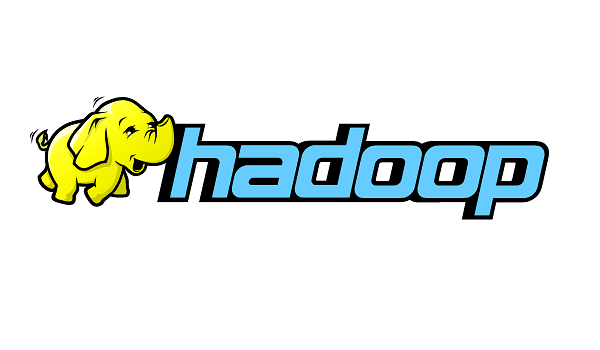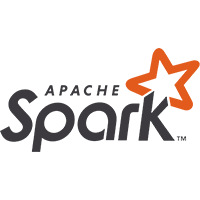Data has become the lifeblood of businesses across the globe. As we navigate through 2024, the volume, variety, and velocity of data continue to explode, making Big Data tools and software more critical than ever before. These solutions allow organizations to not just manage this unprecedented surge of data, but to analyze and leverage it for actionable insights and informed decision-making.
Read on to discover which of these Top Big Data Tools & Software of 2024 align best with your organizational needs.
- Hadoop: Best for large-scale data processing
- Apache Spark: Best for real-time analytics
- Google BigQuery: Best for data handling in Google Cloud
- Snowflake: Best for cloud-based data warehousing
- Tableau: Best for data visualization
- PowerBI: Best for in-depth analysis
- Databricks: Best for team collaboration
Top Big Data tools
Hadoop: Best for large-scale data processing
Pros
Cons

Hadoop is an open-source software framework developed by Apache for storing and processing large volumes of data across clusters of computers. It employs a distributed file system, HDFS, that splits files into large blocks and distributes them across nodes in a cluster, ensuring efficient data processing. The core of Hadoop, MapReduce, is a programming model that enables the processing of large data sets. By leveraging Hadoop, organizations can handle vast amounts of data efficiently, making it a mainstay in the realm of Big Data.
Apache Spark: Best for real-time analytics
Pros
Cons

Apache Spark is an open-source, distributed computing system used for big data processing and analytics. It provides an interface for programming entire clusters with implicit data parallelism and fault tolerance. Spark can handle both batch and real-time analytics, distinguishing it from traditional Hadoop MapReduce paradigm.
The Spark Core is complemented by a set of powerful, higher-level libraries which can be seamlessly used in the same application. These libraries include SparkSQL for SQL and structured data processing, MLlib for machine learning, GraphX for graph processing, and Spark Streaming.
Designed to be highly accessible, Spark supports programming in Java, Python, R, and Scala, and includes over 100 operators for transforming data and familiar data frame APIs for manipulating semi-structured data.
Google BigQuery: Best for data handling in Google Cloud
Pros
Cons

Google BigQuery is a fully-managed, serverless data warehouse that enables super-fast SQL queries using the processing power of Google’s infrastructure. It allows you to analyze large datasets by running SQL-like queries in a highly scalable and cost-effective manner. BigQuery is unique in its provision for machine learning capabilities with BigQuery ML, geospatial analysis with BigQuery GIS, and advanced business intelligence with its BI Engine. This tool can ingest and process real-time data, making it ideal for businesses that require immediate insights. Its integration with Google Cloud services makes it a popular choice for handling data in the Google Cloud ecosystem.
Snowflake: Best for cloud-based data warehousing
Pros
Cons

Snowflake is a cloud-based data warehousing platform that leverages a unique architecture to allow for efficient data storage and analytics. It separates storage and compute resources, enabling users to scale each independently for cost efficiency and improved performance. Snowflake supports structured and semi-structured data formats and uses SQL-based queries, making it easy for those familiar with SQL to use. Key features include zero-copy cloning for rapid data duplication, Time Travel for accessing historical data, and Secure Data Sharing for live data sharing across Snowflake accounts. With Snowflake, businesses can securely store, integrate, and analyze their data.
Tableau: Best for data visualization
Pros
Cons

Tableau is a leading data visualization and business intelligence tool that enables users to analyze and present data in visually compelling ways. With its intuitive interface and drag-and-drop functionality, Tableau simplifies the process of creating interactive dashboards, charts, and graphs. It offers extensive data connectivity options, allowing users to connect to various data sources for real-time analysis. Tableau’s advanced analytics capabilities and AI-driven insights empower users to uncover hidden patterns and make data-driven decisions. Its collaborative features facilitate sharing and collaboration among teams, making Tableau a go-to solution for effective data visualization and analysis.
PowerBI: Best for in-depth analysis
Pros
Cons

Power BI is a powerful business intelligence and data visualization tool offered by Microsoft. It enables users to connect to various data sources, transform raw data into meaningful insights, and create interactive visualizations, reports, and dashboards. Power BI provides a user-friendly interface with drag-and-drop functionality, making it accessible to users of all skill levels. It supports real-time data streaming, collaboration, and sharing features, allowing teams to collaborate on data analysis and decision-making. With its extensive integration capabilities, Power BI seamlessly integrates with other Microsoft products and services, providing a comprehensive solution for data analytics and business intelligence needs.
Databricks: Best for team collaboration
Pros
Cons

Databricks is a unified analytics platform designed to simplify and accelerate the process of building data-driven applications. It combines data engineering, data science, and business analytics in one collaborative workspace. Databricks leverages the power of Apache Spark, an open-source analytics engine, to provide scalable and high-performance processing and analysis of large datasets. It offers a user-friendly interface, interactive notebooks, and collaborative features, enabling teams to work together on projects, share code, and gain valuable insights from data. Databricks supports a wide range of data sources, provides advanced analytics capabilities, and integrates with popular machine learning frameworks, making it a comprehensive platform for data engineering, data science, and business intelligence tasks.
Key categories of big data software
Data storage and management
Big data tools in this category focus on efficiently storing and managing large volumes of data. They include distributed file systems like Apache Hadoop Distributed File System (HDFS), cloud-based storage solutions such as Amazon S3, and NoSQL databases like MongoDB. These tools provide scalable and robust solutions for organizing, storing, and accessing structured and unstructured data.
ALSO READ: 5 Best Data Storage Solutions for BI
Data Processing
Data processing tools are designed to handle the complexities of processing and manipulating big data. They enable distributed computing and parallel processing, allowing for faster and efficient data processing. Apache Hadoop, Apache Spark, and stream processing frameworks like Apache Flink and Apache Kafka are prominent tools in this category.
Data analysis
Big data analysis tools focus on extracting insights and patterns from large datasets. They provide capabilities for querying, aggregating, and analyzing data to uncover meaningful information. Tools like Apache Hive and Apache Pig offer SQL-like query languages, while machine learning frameworks like TensorFlow and Scikit-learn enable advanced analytics and predictive modeling.
Data visualization
Data visualization tools aid in presenting complex data in a visual and interactive format. They help users understand and communicate data insights through charts, graphs, and dashboards. Popular tools in this category include Tableau, Power BI, and open-source libraries like D3.js. These tools facilitate exploratory data analysis, making it easier to identify patterns and trends.
The importance of big data tools for businesses
Big data tools serve as a cornerstone for businesses, propelling innovation, fostering sustainable growth, and driving digital transformation.
By leveraging big data analytics, organizations can draw valuable insights from massive data sets, enabling them to predict customer behavior, identify market trends, and improve overall performance. These tools also facilitate process automation, helping businesses reduce operational costs and time-consuming manual tasks, thus enhancing productivity. Further, the strategic application of big data can also aid in risk management, helping enterprises anticipate and mitigate potential threats. Equally crucial is the role of big data tools in creating personalized customer experiences, which is pivotal in driving customer loyalty and business growth.
The future of big data software
As we look ahead, the future of big data tools is nothing short of revolutionary. Augmented analytics, powered by advanced AI and machine learning, is expected to redefine the landscape, automating data preparation and interpretation processes. This will democratize data analytics, making it accessible to non-technical users, thus driving data-driven decision making across all business levels. Additionally, real-time analytics will play a more prominent role, enabling businesses to respond to trends and anomalies instantaneously. The integration of privacy-enhancing technologies with big data tools is another trend to watch, given the increasing focus on data security and regulatory compliance. Overall, the evolution of big data tools will continue to unlock new frontiers, fostering unprecedented business growth and innovation.
ALSO READ: Top Prescriptive Analytics Tools
Finding the right big data tools for your business
The quest to find the right big data tools for your business is a critical journey that can significantly influence your operational effectiveness and competitive standing. It’s essential to align this choice with your specific business objectives, technical infrastructure, and team expertise. As we navigate the dynamic digital terrain, the ability to adapt and adopt scalable solutions is key. Future-proof your business by harnessing advanced technologies like AI and machine learning, but without overlooking the importance of data privacy and security. Embrace the power of big data and ride the wave of this digital revolution towards unparalleled business growth and innovation.
For a comprehensive list providing the top BI software tools on the market today, check out our Business Intelligence Software Buyer’s Guide.





